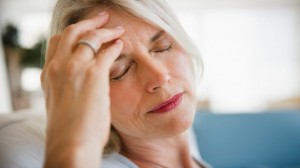 A migraine is a common headache disorder that is characterised by recurrent headaches. The headaches can be moderate or severe. The headaches that affect one half of your head are typically known to be pulsating in nature. Associated symptoms can include vomiting, nausea and sensitivity to smell, sound or light.
A migraine is a common headache disorder that is characterised by recurrent headaches. The headaches can be moderate or severe. The headaches that affect one half of your head are typically known to be pulsating in nature. Associated symptoms can include vomiting, nausea and sensitivity to smell, sound or light.
Generally, the pain worsens when you engage in physical activity. Studies have shown that up to 33 percent of people having this disorder have an aura. This is a short visual disturbance period signalling that a headache will occur soon. Occasionally, an aura may occur without or with a little headache following it.
Studies have revealed the cases of a migraine to be approximately 3 million men, women and children. It’s believed that more women suffer from the disorder than men because of hormonal factors. The onset of the disorder is from childhood, but it is most common in the twenties and thirties. It’s relatively rare past the age of 40. Hence, prevalence rises from the first-fourth decades after that it declines. The disorder may also be a significant health problem among children.
Management Techniques
The first step to managing the disorder is learning about the symptoms.
Symptoms of a Migraine
The International Headache Society (IHS) classifies a headache is a migraine in these instances.
- The pain you are feeling can be classified by two or more of the following.
- Aggravated by movement
- Throbbing
- Moderate to severe
- One-sided
- There are one or more of these associated symptoms.
- Phonophobia (sensitivity to noise)
- Photophobia (sensitivity to light)
- Vomiting
- Nausea
- A headache that lasts for between 4-72 hours.
- Other symptoms
- Loss of consciousness or paralysis
- Speech disturbance
- Tingling, needles and pins or numbness; sometimes even one-sided limb weakness
- The stiffness of shoulders or neck
- Diarrhoea
- Problems with coordination or articulation
- Feeling generally extremely unwell
- Confusion and difficulty in concentrating
- Osmophobia (sensitivity to smell)
Medication
Medication is a proven method of treating and preventing migraines. However, it’s only part of the solution. It is also essential to ensure that you are taking good care of yourself, plus know how you can deal with migraine pain whenever it strikes.
The same choices of lifestyle promoting good health can reduce the severity and frequency of your migraines as well. In fact, knowing how you can manage your migraine with behavioural and lifestyle measures, plus medication, can be the most effective method of handling migraines.
Find an Environment That is Calm
At the first sign of the disorder, retreat from your normal activities if possible.
You should turn off the lights because migraines usually increase sensitivity to sound and light. Relax in a room that is dark and quiet. Sleep if it is possible.
Try temperature therapy – You can apply cold or hot compresses to your neck or head. Ice packs are known to have a numbing effect. This may dull the feeling of pain. Heating pads and hot packs can relax your tense muscles. Warm baths or showers may have the same effect.
Take a caffeinated drink – In small amounts, caffeine can relieve the pains caused by a migraine during the early stages. Or it can enhance acetaminophen and aspirin pain-reducing effects. However, you should be careful not to take too much caffeine as it can cause withdrawal headaches later on.
Other Ways of Managing Migraines
You should also ensure that you sleep well and eat wisely as eating habits may influence your migraines. You should be consistent in eating, do not skip meals and avoid foods that trigger your migraines.
Neuroworks Chiropractic Clinic
If you need an ealing chiropractor, Neuroworks Chiropractic Clinic uses modern diagnostic and treatment equipment together with a complete range of physical and chiropractic therapy techniques, medical acupuncture, vestibular rehabilitation as well as neuro-rehabilitation.